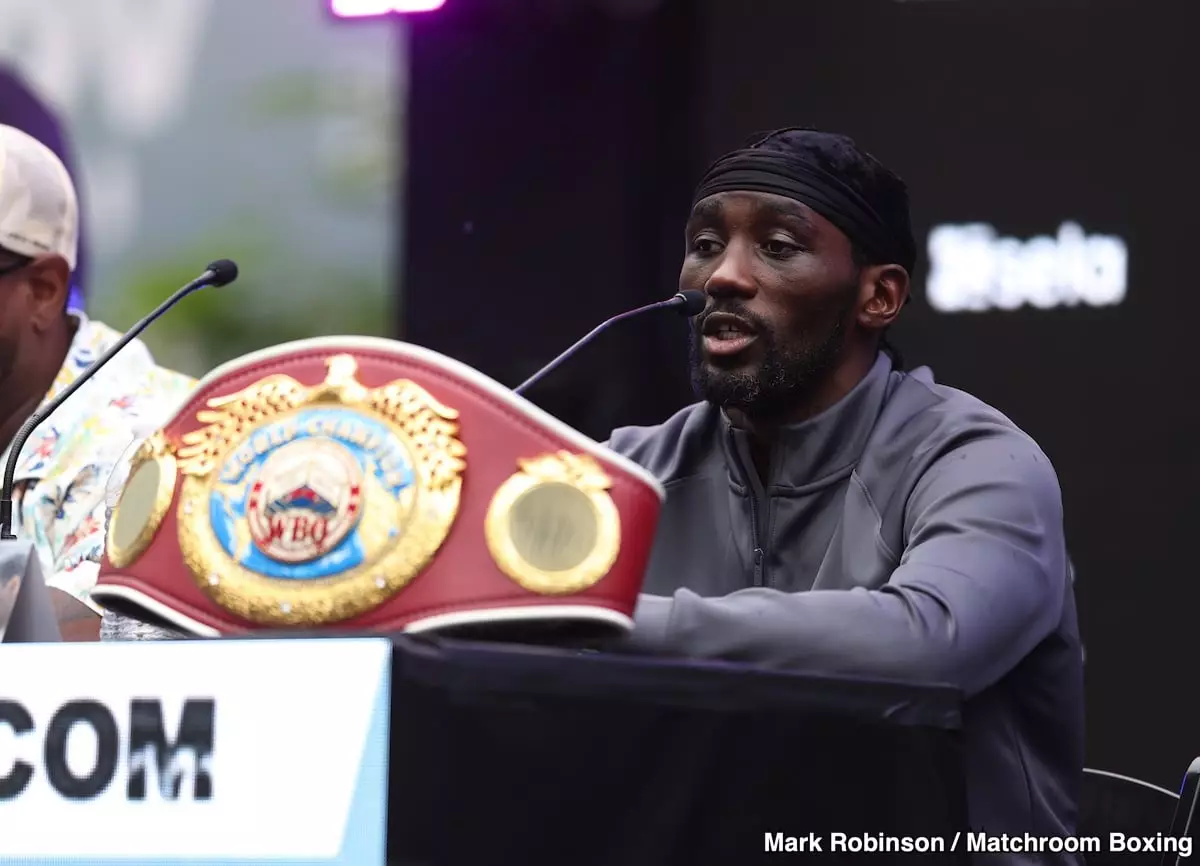In the dynamic and often contentious world of boxing, rivalries and public feuds between athletes can greatly shape their legacies. Recently, criticisms surfaced when Canelo Alvarez, the reigning champion in several weight divisions, publicly questioned Terence Crawford’s standing in the sport. Canelo bluntly stated that Crawford, despite his impressive undefeated record, has only managed to defeat „one good fighter,“ which he identified as Errol Spence. This assertion triggered a heated response from Crawford, who believes that he has consistently showcased elite skills against his opponents. However, the validity of Alvarez’s claim opens a deeper dialogue concerning the nature of legacy in boxing and the factors that define it.
Legacy in boxing is often established by the quality of opponents faced and the level of competition fought throughout a fighter’s career. Crawford’s stellar record, at 41-0 with 31 knockouts, paints a picture of dominance. Yet, the crux of the debate lies in the caliber of opponents he has faced. Canelo’s comments suggest that Crawford’s ascension to the top has not been met with the kind of elite competition that typically embodies greatness in the sport. While Crawford has certainly demonstrated his talent, the question remains: can victories over lesser-known opponents be considered a sufficient foundation for a strong legacy?
The reality is that Crawford’s most significant victory, against a compromised Errol Spence, raises eyebrows regarding the credibility of his claims to greatness. Spence, who had been through a harrowing car accident in 2019, was arguably not at his peak performance during their match. This aspect of their bout casts a shadow over Crawford’s achievements, prompting fans and pundits alike to ponder the depth of his resume.
Boxing’s landscape has shifted drastically over the years, with promoters often carefully orchestrating matchups to build fighters‘ personas while avoiding potential pitfalls. It appears that Crawford has primarily faced opponents deemed „B-level,“ avoiding the leaders in his weight class and those who could pose a genuine threat to his record. Critics argue that this approach has allowed Crawford to gain titles without the necessary tests that typically accompany championship glory.
In contrast, sectors of the boxing community applaud fighters who seek out challenges, even at the risk of their own undefeated records. Realizing the immense stakes involved, many argue that fighters like Canelo, who have faced a bevy of A-level opponents, are the ones who truly solidify their legacies. It raises an essential inquiry about the responsibilities of champions: Is it better to preserve an undefeated record or to embrace the risks of elite competition?
Crawford’s reaction to Alvarez’s comments reflects his desire to be recognized among the legends of the sport. His witty retort on social media underscores his frustration; he perceives Alvarez’s remarks as a dismissal of his accomplishments. However, the truth remains that if Crawford genuinely aspires to change perceptions surrounding his legacy, he needs to pursue bouts against more elite fighters.
To bolster his standing and potentially earn a coveted match against Canelo himself, a move up to super middleweight to challenge top contenders like David Benavidez could be pivotal. This path not only enhances Crawford’s chances to prove his mettle but also offers a potential blockbuster fight against Canelo, should he succeed. Engaging in competitive matchups would bolster his resume, providing fans with tangible proof of his abilities against formidable adversaries.
Terence Crawford’s legacy is a multifaceted narrative that invites scrutiny against the backdrop of Canelo Alvarez’s accusations. While Crawford possesses undeniable talent and an undefeated record, the question of the quality of opposition is a continuing saga in his narrative. Only through actively seeking challenging matchups can Crawford strive to elevate his legacy and silence critics. As the boxing world continues to evolve, every fighter must grapple with their paths, illuminating paths that could lead to historic encounters and, ultimately, defining their places in the annals of boxing history.


Napsat komentář